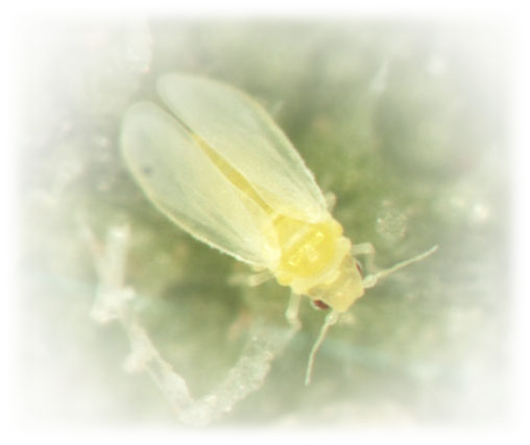
|
|
|
|

|
|||
|
|
|||
|
Last fall, researchers from the University of California discovered pumpkin plants
on the UC Research Center in Holtville that showed signs of viral infection (severe
stunting, leaf yellowing, and leaf curling) associated with high populations of
whiteflies. Through a series of laboratory tests, they found the plants were infested
with a virus similar to Squash vein yellowing virus (SqVYV), a Bemisia whitefly
transmitted ipomovirus (family Potyviridae). It is not clear where the ipomovirus
originated and fortunately since the initial discovery, subsequent sampling of melons
this spring has yielded no further infected plants. So why is this important? If
this ipomovirus were to spread throughout the region it could pose a threat to melon
production in the desert southwest, particularly on watermelons in years when whitefly
populations are high during the spring. SqVYV was first identified from squash and
watermelon in Florida in 2005, and had been causing serious decline of watermelon
vines since 2003. To date, Florida is the most economically impacted area by SqVYV,
but the virus has also been detected in Indiana and South Carolina. As noted above,
whiteflies (Bemisia tabaci b-biotype) acquire SqVYV in semi-persistent manner, and
appear to retain the virus for only 24 hr after leaving infested plants. In commercial
watermelon production, symptoms of SqVYV vine decline are usually first noticed
at or just before harvest when whitefly populations are allowed to build up. Symptoms
include yellowing, scorched or brown leaves, defoliation and wilting of the vines,
and a rapid collapse of mature vines. The interior of the mature fruit rind can
be discolored (brown areas under the rind), rendering the fruit unmarketable. Early
symptoms on watermelon include yellowing and downward curling of the new growth.
Based on reports from Florida, muskmelon (Cucumis species) are not very susceptible
to SqVYV. To date, the host range of SqVYV appears to be limited only to cucurbit
crops and weeds. For more information on this virus visit these publications:
Recommendations for Management of Whiteflies, Whitefly-transmitted viruses, and
Insecticide Resistance for Production of Cucurbit Crops in Florida and
A new and potentially damaging whitefly-transmitted virus of cucurbits was found
this fall 2014 in Imperial County, CA. If you experience vine decline
near or during watermelon harvest or observe any unusual symptoms on melons, please
contact us.

Remember, When in Doubt . . . . . “SCOUT”
Click picture to listen to John’s update
To contact John Palumbo go to: jpalumbo@ag.arizona.edu |
|||
| Back | |||
|
For questions or comments on any of the topics please contact Marco Pena at the Yuma Agricultural Center.
|
|||
|
Home |
Cotton | Veggies |
Forages | Grains
| Citrus |
Crop x Crop Insects | Diseases| Weeds | Pesticides | Economics | News | Weather | Research | Photos | Contacts | General Info. Copyright © 2001 University of Arizona, College of Agriculture and Life Sciences Webmaster: Al Fournier (acis@ag.arizona.edu) |
|||
